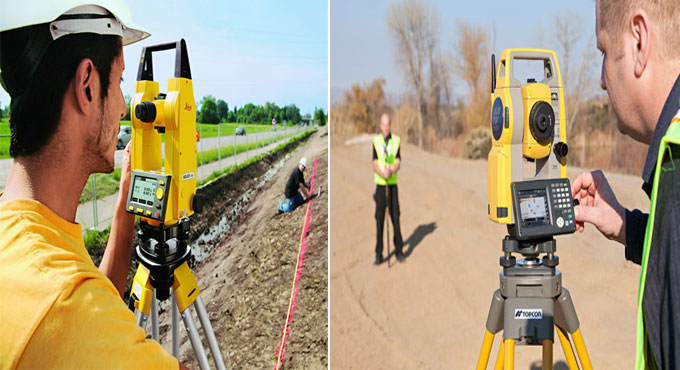
Variations among Theodolite and Total Station in surveying
Both Theodolite and Total Station refer to popular land surveying apparatuses which can be utilized to derive information concerning the plot where construction works will be started for buildings, bridges, roads, highways, dams, etc.).Both Theodolite and total station can be applied to calculate the horizontal and vertical angles for surveying and engineering projects.
Thedolite: A moveable telescope is included in theodolite that is fixed among vertical and horizontal axes. A Theodolite can calculate the horizontal and vertical angles precisely. New ones can perfectly calculate the angles instantly, 1/3600th of a degree.
The angle of each axes should be calculated with moderately perfect accuracy provided that the operator possesses adequate knowledge on the application of the tools and fundamental trigonometry. To operate a theodolite as well as facilitate calculation and align angles, another person should be employed besides the main operator.
Normally, it comprises of a telescope affixed with two rotating disks or dials ( marked with degrees from 0 to 360 ).
The telescope is revolved both horizontally & vertically for measuring the angles. To maintain accuracy, ensure that the proper training is given to both the operators so that they can understand all of the components of acquiring data. These may comprise of leveling the tripod/theodolite and measuring stake along with aligning the stake and measuring line to obtain perfect data, and finally apply mathematical and graphical skills to produce exact output.
Total Station: Conversely, Total station belongs to a multi-use surveying instrument that is founded on electronic distance measurement (EDM). It can be applied to calculate distance, angles, elevations maintaining superior accuracy.
The data collected by a total station is transmitted through a USB port into the computer where it can be seen and examined simply.
A total station incorporates the theodolite functions to work out the angles and distance through an EDM (electronic distance meter). Total stations apply a system of prisms and lasers to facilitate digital readings of all the measurements all through your job.
All of the information obtained by the total station is preserved in an external computer where data is maneuvered and added to CAD programs. There are also Robotic total stations which facilitate the operator to function independently through a remote control.
Theodolites can only calculate angles and contain a minimum range of about less than a kilometer. Theodolites are less accurate and less expensive as compared to total station. The electronic theodolites are the upgraded versions of the normal theodolite.
Conversely, the Total station can work out several data instead of just angles. They contain a minimum range of about 1 km and provide accurate results. They are quite expensive with reference to theodolites.
Due to its digital integration and accuracy, a total station outstrips a theodolite. But, total stations are much more expensive and thorough surveying training as well as particular product and software training are required to operate them.
While executing surveying jobs that extent large distances, specifically over treacherous terrain, a total station will produce the most authentic and precise results. For simple plots of smaller areas, a theodolite is best suited. Prior to buy them, verify that they contain the required accessories for the job.
To use the theodolite, required elements are a measuring stake and steel tape, a tripod, as well as grid paper and a pencil to record the data whereas a total station contains all the required accessories.


